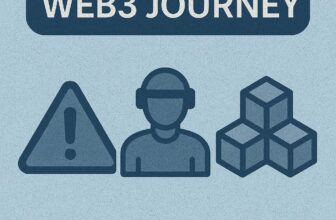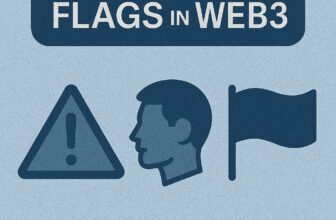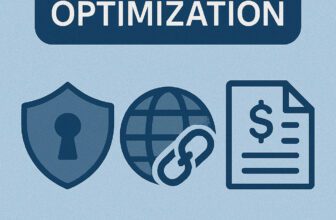Understanding Block Explorers in Crypto
Learn how to inspect transactions, trace funds, and stay safe with tools like Etherscan.
-
Level
Beginner to Intermediate
-
Duration
10 minutes
-
Lesson
5 of 11
-
Course
Crypto in Practice
-
Status
✅ Completed
📘 Lesson 5: Using Block Explorers (Etherscan, etc.)
🧠 Intro
Block explorers like Etherscan are essential tools in the world of crypto. Whether you’re verifying a transaction, tracking wallet activity, or investigating suspicious contract interactions, mastering how to use a block explorer is critical. This lesson guides you through the features, practical uses, and insights these tools offer — all with clarity and security in mind.
🔍 Overview
Block explorers serve as windows into the blockchain, allowing users to view and audit transactions, smart contracts, and token movements. This lesson will equip you with the ability to use popular explorers like Etherscan to validate activity, check gas fees, verify contract interactions, and more.
📋 What You’ll Need to Know
Prerequisites:
Basic understanding of how transactions and wallets work (covered in previous lessons).Target Audience:
Beginners and intermediate crypto users looking to confidently navigate blockchain data.
📚 Lesson Content
Understand the role and functionality of block explorers in navigating Ethereum and other chains. Explore tools like Etherscan, Arbiscan, and Polygonscan to analyze on-chain data, verify token contracts, and improve your operational transparency. Learn how to investigate wallet history and decode interactions with DeFi protocols or NFTs.
✍️ Content
🔗 What Is a Block Explorer?
A block explorer is a blockchain analysis tool that allows anyone to interact with raw blockchain data in a readable format. For example, Etherscan is the primary explorer for Ethereum. These platforms let you search wallet addresses, view recent blocks, explore smart contracts, and even read internal transactions. Because the blockchain is transparent, every activity is visible—you just need the right tools to access and interpret it.
🔍 Searching Transactions & Wallets
The most common use of block explorers is to verify a transaction’s status. You can paste a transaction hash (TXID) into the search bar to instantly see whether it was successful, how much gas it used, and which addresses were involved. Similarly, searching a wallet address will reveal its balance, transaction history, and the tokens it holds. For example, after sending ETH, you can confirm receipt by checking the “To” and “From” fields of a transaction.
🛠️ Exploring Smart Contracts
Block explorers also let users view and interact with deployed smart contracts. You can verify if a contract is official by checking for a verified source code and reading its function tabs. On Etherscan, verified contracts often show an interface that lets users interact directly with them—such as staking tokens or withdrawing funds—without using a third-party dApp.
🧠 Token & NFT Tracking
Using token explorers, you can inspect ERC-20 and ERC-721 activity. You can see transfers, holders, and analytics tied to any token. This is particularly useful when evaluating a new token’s legitimacy or tracking airdrop distributions. For NFTs, explorers can show ownership transfers and metadata updates.
⚠️ Spotting Red Flags & Scams
Knowing how to use block explorers can help you avoid scams. You can detect suspicious wallet activity, assess whether a contract has malicious functions, and review token liquidity movements. This kind of diligence is essential before interacting with unknown protocols or tokens.
🔄 Other Chain Explorers
Beyond Ethereum, many blockchains have their own explorers like Arbiscan (for Arbitrum), BSCScan (for Binance Smart Chain), and Polygonscan. While the interface is often similar, knowing which explorer to use for which chain ensures accurate data.
✨ Key Elements
- How to read and verify a transaction
- Navigating wallet history
- Using Etherscan for smart contracts and tokens
- Recognizing suspicious patterns on-chain
- Applying this across chains: BSC, Polygon, Arbitrum, etc.
🔗 Related Terms
- TXID (Transaction ID)
- Gas Fees
- Block Height
- Contract Verification
- Token Holders
- DeFi Protocol Interaction
- ERC-20, ERC-721
📌 Conclusion
Block explorers are essential for transparency and due diligence in the crypto space. Once you understand how to interpret the data they provide, you’re better equipped to verify transactions, inspect contracts, and protect yourself from potential risks. This skill is foundational as you continue engaging with DeFi and Web3 ecosystems.
Featured Courses
Capstone: Simulated Web3 Journey
Managing Risks & Red Flags in Web3
Privacy & Transaction Optimization
Using Crypto in Daily Life
NFTs & Web3 Apps in Practice
Introduction to DeFi: Lending, Staking & Yield Explained
Understanding Block Explorers in Crypto
Bridges & Multi-Chain Navigation
Swapping Tokens & Using DEXs
Learn to Navigate DeFi Interactions
🚀 Explore the Next Step
Now that you understand how to use block explorers, it’s time to dive into how protocols work behind the scenes. Learn the mechanics of lending, staking, and earning yields in the DeFi world.
Continue to Lesson 6: Intro to DeFiJoin the Crypto Hoopoe Community








